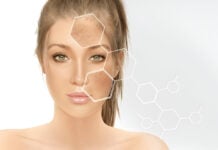Dermatomyositis (DM) is a rare but fascinating autoimmune disease that uniquely affects both the skin and muscles. While its clinical manifestations can be quite striking and sometimes puzzling, understanding the disease sheds light on the complex ways the immune system can mistakenly attack the body. For patients and caregivers, dermatomyositis is not just a medical term; it is a journey marked by visible skin changes, muscle weakness, and the emotional challenge of living with a chronic illness.
What is Dermatomyositis?
At its core, dermatomyositis is an autoimmune condition where the immune system erroneously targets healthy tissues, in this case, the skin and muscles. It falls under the broader category of idiopathic inflammatory myopathies, which are disorders characterized by muscle inflammation and weakness without a known cause (Dalakas, 2015). The hallmark of dermatomyositis is its dual involvement: it causes distinctive skin rashes alongside muscle inflammation, which sets it apart from other autoimmune muscle diseases.
Skin Involvement: More Than Just a Rash
One of the earliest and most visible signs of dermatomyositis is a characteristic skin rash. This rash can appear even before muscle symptoms and often serves as a crucial clue for diagnosis. Patients frequently describe a reddish or violet discoloration on their face, eyelids, and joints, known as the heliotrope rash. Additionally, a scaly, patchy rash may develop over knuckles, elbows, and knees, referred to as Gottron’s papules (Bohan & Peter, 1975).
These skin changes are more than cosmetic issues; they reflect the underlying immune attack on blood vessels supplying the skin, leading to inflammation and damage. For many patients, these visible signs cause distress, impacting self-esteem and social interactions. The rash can also be itchy or painful, further affecting quality of life.
Muscle Weakness: The Hidden Challenge
While the skin manifestations are often obvious, the muscle involvement in dermatomyositis can be more subtle at first. The disease primarily causes inflammation in the proximal muscles, the muscles closest to the trunk, such as those in the hips, thighs, shoulders, and upper arms (Dalakas, 2015). Patients commonly report difficulty climbing stairs, rising from a seated position, or lifting objects.
This muscle weakness develops gradually and can significantly impair daily activities. Some individuals experience muscle pain or tenderness, but others may have muscle weakness without pain. Over time, if untreated, the inflammation can lead to muscle atrophy and loss of function.
Why Does Dermatomyositis Happen?
The exact cause of dermatomyositis remains elusive, but it is understood as an autoimmune disorder where the immune system targets specific tissues mistakenly. Research suggests that both genetic susceptibility and environmental factors, such as infections or certain medications, may trigger the disease (Dalakas, 2015).
In dermatomyositis, immune cells and autoantibodies attack blood vessels supplying muscles and skin. This vascular damage results in inflammation, tissue injury, and the characteristic symptoms. Scientists are also exploring the role of interferons and other cytokines, signaling proteins that mediate immune responses, in driving the disease process.
Diagnosis: Putting the Pieces Together
Diagnosing dermatomyositis involves a combination of clinical evaluation, laboratory tests, imaging, and sometimes tissue biopsy. Physicians look for the characteristic skin findings alongside muscle weakness. Blood tests often reveal elevated muscle enzymes, such as creatine kinase (CK), indicating muscle damage (Miller et al., 2020).
Electromyography (EMG) can show abnormal electrical activity in affected muscles, while MRI helps visualize muscle inflammation. A muscle or skin biopsy can provide definitive evidence by showing immune-mediated damage under the microscope.
Because dermatomyositis can sometimes be associated with internal malignancies, especially in adults, thorough cancer screening is recommended as part of the diagnostic workup (Bohan & Peter, 1975).
Treatment: Managing Symptoms and Improving Life
Treatment of dermatomyositis aims to reduce inflammation, control symptoms, and improve muscle strength. Corticosteroids, such as prednisone, are the first line of therapy because they are potent anti-inflammatory agents. However, long-term steroid use can have significant side effects, so additional immunosuppressive medications like methotrexate or azathioprine are often added (Miller et al., 2020).
Physical therapy plays a vital role in maintaining muscle strength and preventing disability. Patients benefit greatly from tailored exercise programs designed to improve mobility and endurance while minimizing muscle injury.
Addressing skin symptoms includes sun protection and topical treatments. Since ultraviolet light can exacerbate the rash, patients are advised to use broad-spectrum sunscreens and protective clothing.
Living with Dermatomyositis: The Human Side
Beyond the medical facts, dermatomyositis profoundly affects patients’ lives. The visible skin changes may lead to social anxiety or depression, while muscle weakness can limit independence. The unpredictable nature of flares and remissions adds to the emotional burden.
Support groups, counseling, and patient education are essential components of care. Understanding the disease empowers patients to participate actively in their treatment and adopt lifestyle modifications that improve outcomes.
Dermatomyositis is a complex autoimmune disease that uniquely intertwines skin and muscle involvement. Its hallmark rashes and muscle weakness reflect a misguided immune attack on the body’s own tissues. While challenging, advances in diagnosis and treatment have improved prognosis and quality of life for many patients.
Recognizing the human impact of dermatomyositis helps clinicians provide compassionate care, addressing not only physical symptoms but also emotional and social needs. Ongoing research continues to unravel the mysteries of this disease, holding promise for more targeted therapies in the future.
References
- Bohan, A., & Peter, J. B. (1975). Polymyositis and dermatomyositis (first of two parts). The New England Journal of Medicine, 292(7), 344–347. https://doi.org/10.1056/NEJM197502132920706
- Dalakas, M. C. (2015). Inflammatory muscle diseases. The New England Journal of Medicine, 372(18), 1734–1747. https://doi.org/10.1056/NEJMra1402225
- Miller, F. W., Lamb, J. A., Schmidt, J., & Nagaraju, K. (2020). Risk factors and disease mechanisms in myositis. Nature Reviews Rheumatology, 16(12), 671–683. https://doi.org/10.1038/s41584-020-00521-9












